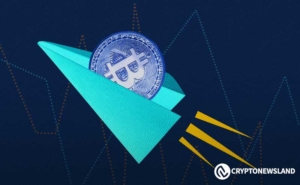Gold Panning in the Sandbox: Finding Long-Term Investment Opportunities Across Bull and Bear Markets (Part 2)
Even in a "Bear Market of Altcoins," betting on projects with strong fundamentals can still yield Alpha returns surpassing BTC and ETH.
Original Title: "Gold Panning in the Desert: Seeking Long-Term Investment Targets Across Bull and Bear Markets (2025 Edition Part 2)"
Original Authors: Alex Xu, Lawrence Lee, Mint Ventures
In the previously published "Gold Panning in the Desert: Seeking Long-Term Investment Targets Across Bull and Bear Markets (2025 Edition)" Part 1 and Part 2, we reviewed and introduced projects in the lending track such as Aave, Morpho, Kamino, MakerDao, projects in the staking track like Lido, Jito, and projects in the trading track such as Cow Protocol, Uniswap, and Jupiter. This article, as the final part of the series, will continue to introduce projects with strong fundamentals and long-term growth potential.
PS: This article represents the authors' phased thinking as of the publication date, which may change in the future. The viewpoints are highly subjective and may contain errors in facts, data, or reasoning.
All views expressed in this article are not investment advice. Industry peers and readers are welcome to provide criticisms and engage in further discussions.
4. Crypto Asset Service: Metaplex
Business Status
Business Scope
The Metaplex protocol is a digital asset creation, sales, and management system built on the Solana blockchain and supporting the Solana Virtual Machine (SVM). It provides developers, creators, and businesses with tools and standards to build decentralized applications. Metaplex supports various types of crypto assets, including NFTs, FTs (Fungible Tokens), Real-World Assets (RWA), gaming assets, DePIN assets, etc.
In terms of crypto asset services, Metaplex's offerings can be categorized into Digital Asset Standards and Asset Issuance/Sales/Management Program Library. The former provides asset issuers with token issuance standards that are highly compatible with the SVM ecosystem, with low creation and management costs. The latter consists of a range of tools and services for asset issuers to create, sell, and manage their assets.
Most of the NFT and FT assets issued on Solana are from Metaplex users.
Over the past six months, Metaplex has also expanded its business horizontally into other foundational service areas in the Solana ecosystem through its new business line, Aura Network, such as digital asset indexing and data availability services.
Metaplex's product and service matrix, Source: Developer Documentation
In the long run, Metaplex aims to become one of the most important multi-field foundational service projects in the Solana ecosystem.
In addition to Solana, Metaplex currently provides services on Sonic and Eclipse as well.
Revenue Model
Metaplex's business model is relatively simple, earning service fees by providing on-chain asset-related services, including asset minting services, as well as digital asset indexing and data availability services.
Metaplex offers a variety of services and products, not all of which incur charges. The specific service fee schedules are as follows:
MPL Asset Service Fee Schedule, Source: Developer Documentation
Aura Service Fee Schedule, Source: Developer Documentation
The Aura business line is still in its early stages, with most of Metaplex's current revenue coming from asset minting and management services (MPL).
Business Data
We will focus on two core metrics: the quantity of assets minted through its services and protocol revenue.
Before presenting and analyzing these two metrics, let's first take a look at the distribution of asset types issued by the Metaplex protocol.
Data Source: Metaplex Public Dashboard, the same below
The chart above shows the trend of the proportion of NFT and FT assets using Metaplex Metadata (providing additional metadata for digital assets, such as asset images, descriptions, etc., which is used for almost all assets).
We can see that at the beginning of 2024, the main assets issued by the Metaplex protocol were NFTs, accounting for approximately 80%. However, starting from April last year, the proportion of FT assets rapidly increased, becoming the main service asset category of Metaplex, currently accounting for over 90%.
Most of these FT assets are meme projects, with the issuers behind them being the main customer base and revenue contributors to Metaplex.
This also means that the prosperity of memes on the Solana blockchain directly affects the business trends of Metaplex.
Let's look at specific business metrics.
Asset Minting Volume (Monthly)
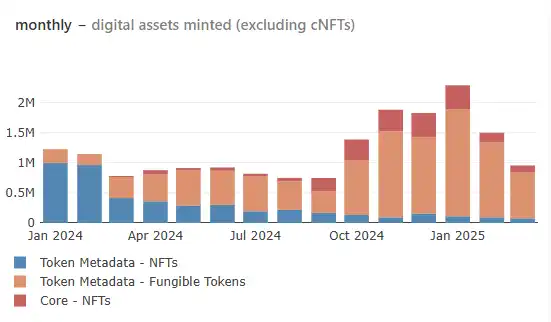
We can see that Metaplex's asset minting volume took off starting from September last year, reaching a historical peak in January (with over 2.3 million types of assets minted). It then gradually declined, with the data in March basically returning to the level of June last year (about 960,000 types of assets minted), closely aligned with the trend of meme transactions' popularity in the Solana ecosystem. The higher the meme popularity, the more assets are issued through Metaplex.
Protocol Revenue
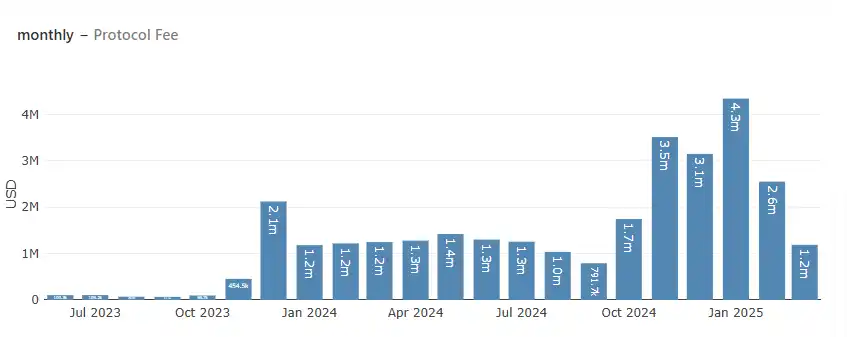
Metaplex's protocol revenue follows the trend of its asset minting volume, reaching a historical peak in January, with protocol revenue reaching $4.3 million, then quickly declining. The estimated protocol revenue for March is $1.2-1.3 million, returning to the level of the first half of last year.
Protocol Incentives
Unlike most Web3 protocols that rely on business data subsidies, Metaplex does not provide subsidies to its business; its revenue is entirely organic, coming from the genuine demand of asset issuers. However, in January to early March of this year, it conducted a $1 million token incentive program in collaboration with Orca, Kamino, and Jito to incentivize the liquidity of its token MPLX, which is now planned to have concluded.
Competitive Landscape
As the earliest asset standard setter on Solana, Metaplex currently faces no direct competition in the field of asset standards and associated asset services within the Solana ecosystem.
Competitive Advantage
Metaplex's competitive advantage stems from being the architect and custodian of Solana's asset standards, serving as the foundation of Solana's digital assets and ensuring interoperability and liquidity across NFTs, FTs, Real World Assets (RWA), Decentralized Public Infrastructure Network (DePIN), in-game assets, and more within the ecosystem.
This means that issuers who have minted and maintained assets on Metaplex would face significant time, technical, and economic costs if they desire to migrate their assets to other protocols for management.
Furthermore, new developers and projects opting for an asset service platform would prioritize Metaplex's asset format with stronger ecosystem compatibility to ensure their assets align with Solana's other ecosystem infrastructures (such as wallets) and products (DeFi, trading dashboards).
Beyond asset services, Metaplex's upcoming data indexing and data availability service, Aura Network, is poised to create a second growth curve for Metaplex in the future. Given the high overlap in target audience between this new service and Metaplex's existing client base, the expansion into this new business might be more readily accepted and experienced by current collaborating clients.
Key Challenges and Risks
The dwindling popularity of Solana memes has led to a continuous decline in asset minting volumes, resulting in reduced business revenue. This trend, observed since January, has yet to show signs of reversal.
Metaplex's current revenue model relies on one-time fees based on the type of asset created. Projects with relatively stable asset types cannot provide Metaplex with sustained revenue over the long term.
Valuation Reference
Metaplex's protocol token is MPLX, with a total supply of 1 billion.
Currently, MPLX primarily serves as a governance token. In addition, Metaplex announced that starting from March 2024, 50% of the protocol's revenue would be used for token buybacks (in practice, this standard has not been strictly enforced and most buybacks fall between 10,000 to 12,000 SOL), with the repurchased tokens going into the treasury to further develop the protocol's ecosystem.
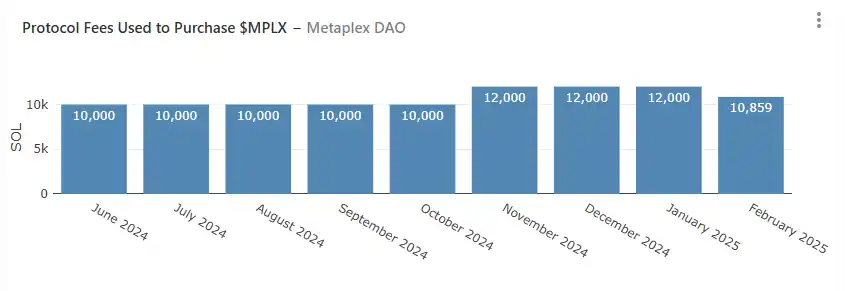
So far, the monthly buyback volume has been above 10,000 SOL.
Considering that Metaplex lacks comparable benchmark projects, we mainly observe its market cap-to-monthly protocol revenue ratio to evaluate it from a vertical perspective.
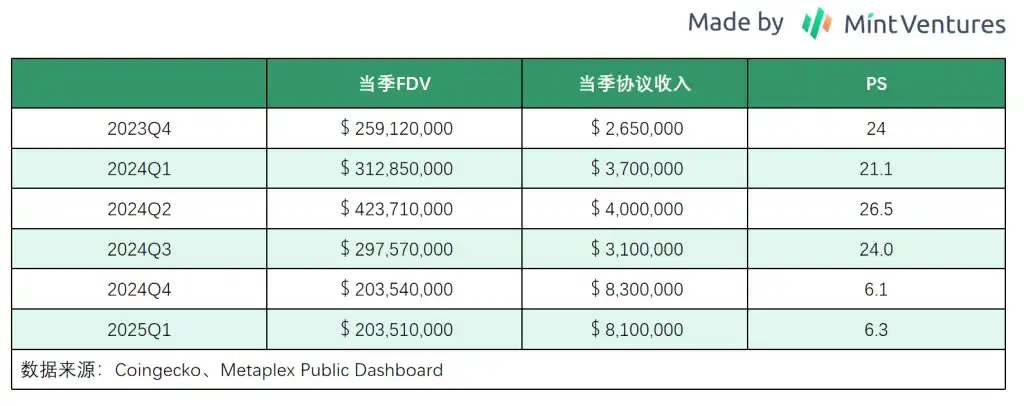
As of now, compared to its first-quarter protocol revenue, its valuation level is at a low point over the past year, which also largely reflects the market's pessimistic expectations for the asset issuance market on Solana.
5. Hyperliquid: The Troublesome Derivative + L1
Hyperliquid is one of the few practical new projects in this cycle. Mint Ventures published an article about Hyperliquid at the end of last year. Interested readers can go check it out.
Current Business Status
Hyperliquid's business can be divided into three parts: derivative exchange, spot exchange, and public chain. Currently, all three business segments have been launched, but in terms of business volume and influence, the derivative exchange is Hyperliquid's core business at present.
For the derivative exchange, trading volume and open interest are its key metrics.
Hyperliquid's derivative trading started cold-launching in June 2023, initiated incentive activities in November 2023, and saw a formal token airdrop by the end of November 2024. Since December of last year, the average daily trading volume of Hyperliquid's derivatives has been between $40-70 billion, with a peak daily trading volume of $181 billion. Open interest has also quickly increased, fluctuating between $25-45 billion since December.
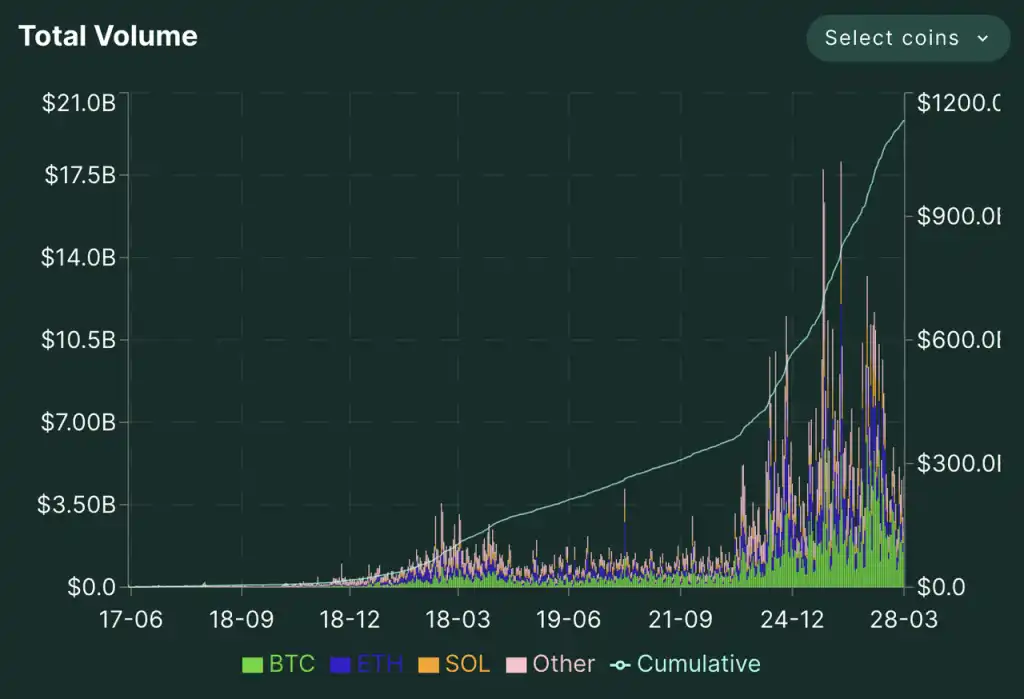
Source: Hyperliquid Website
Hyperliquid's platform funds surged starting in November and have been fluctuating around $20 billion since then. However, due to a series of recent attack incidents, Hyperliquid's funds plummeted from $25 billion to $18 billion.
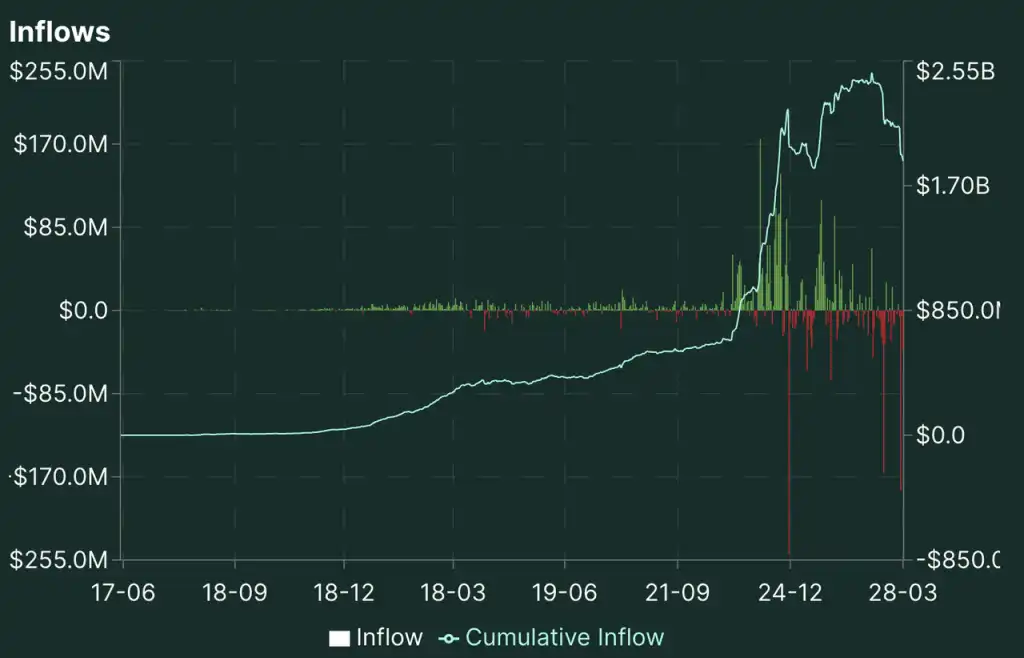
On the user side, the number of addresses on Hyperliquid has also rapidly increased, with the current total number of transaction addresses approaching 400,000.
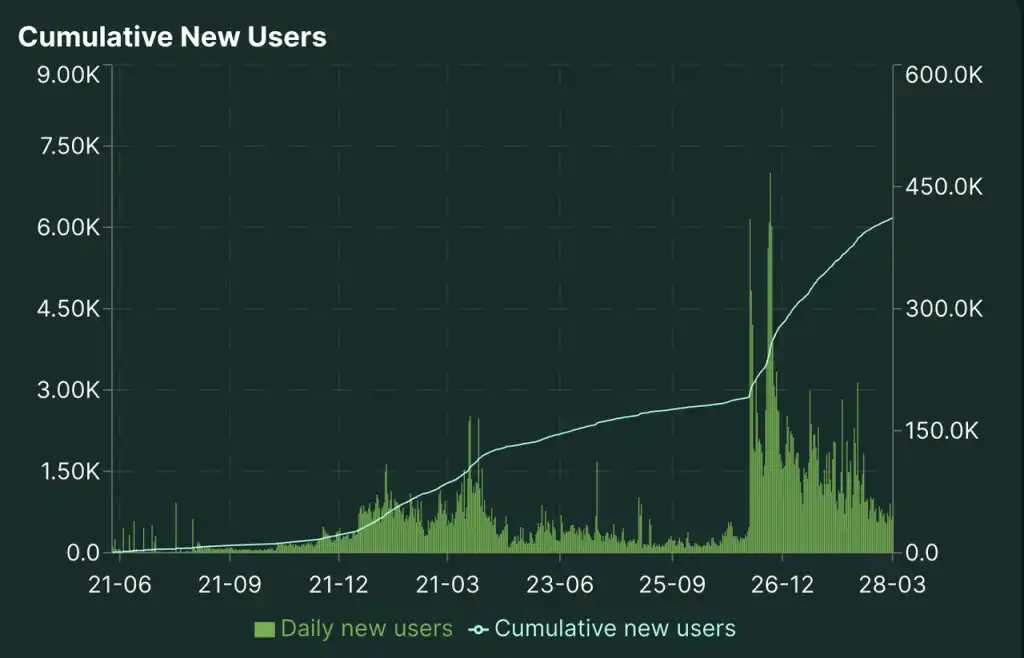
In terms of spot trading, Hyperliquid previously only supported native assets on Hyperliquid L1, with HYPE itself accounting for the vast majority of the trading volume. However, in February of this year, Hyperliquid launched uBTC, a decentralized BTC spot trading solution tailored for Hyperliquid. However, the daily trading volume of BTC spot trading on Hyperliquid is roughly between $20-50 million, accounting for a relatively small proportion of the daily spot trading volume of around $200 million on Hyperliquid.
Hyperliquid Spot Trading Volume Source: DeFillama
Additionally, Hyperliquid's spot listing adopts a decentralized approach (HIP-1), where anyone can qualify to publicly auction a spot listing on Hyperliquid. The auction amount for this part can be seen as Hyperliquid's "listing fee," the trend of which is shown in the following graph;
Hyperliquid Spot Listing Qualification Historical Auction Prices Source: ASXN
It can be seen that Hyperliquid's listing fee has fluctuated significantly, reaching a peak of nearly a million dollars in December, but has since decreased to around $50,000 as the market's enthusiasm for meme coins has waned.
Hyperliquid's EVM component, HyperEVM, went live in alpha on February 18 of this year. On March 26, HyperEVM was integrated with the existing HyperCore. However, since a significant portion of EVM protocols have not yet been launched, key infrastructure such as bridges is not very mature, and the official team has not introduced any incentives, the overall activity of HyperEVM is still limited. In terms of TVL, trading volume, and transaction count, it ranks around the top 20 among all chains.
Cross-chain TVL, Trading Volume, TX Data Source: Geckoterminal
Regarding revenue distribution, they will allocate all protocol revenue, including derivatives and spot trading fees, as well as spot listing auction fees, except for the portion allocated to the HLP, all to repurchase $HYPE tokens through the AF Assistance Fund.
Hyperliquid's revenue in the last 30 days was $42.05 million, ranking just below Tether, Circle, and Tron, higher than Solana, Ethereum, and other L1 blockchains, as well as many other applications like Pump Fun and Pancakeswap. Except for Tron, the revenue of other protocols is not related to their tokens (or has no associated token).
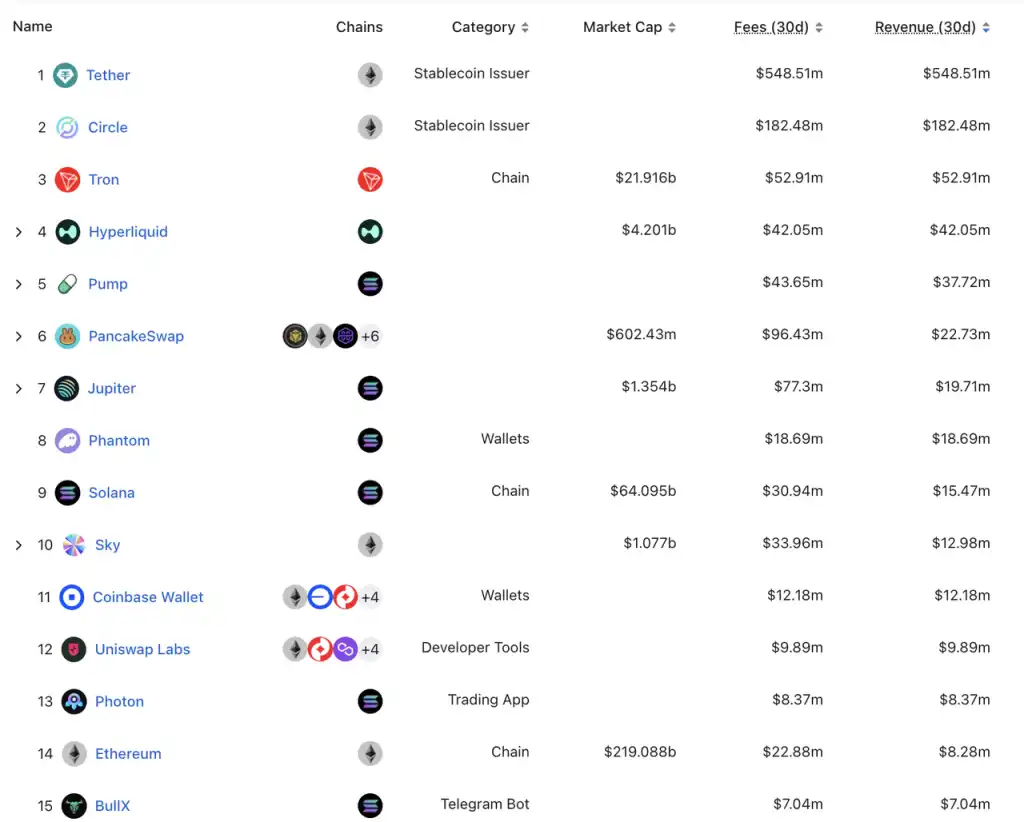
30-day Revenue Ranking of All Protocols Source: DeFillama
Competitive Landscape
As the HyperEVM is currently in a state more akin to an "online test" status, we mainly distinguish between derivative exchanges and spot exchanges to analyze Hyperliquid's competitive position.
Decentralized Derivatives Exchange Trading Volume Share Source: Dune
Hyperliquid currently holds an absolute leading position in decentralized derivatives exchanges.
Compared to several top-tier centralized exchanges, Hyperliquid's trading volume is also rapidly increasing. The following chart shows the ratio of Hyperliquid's trading volume to that of Binance, Bybit, OKEx, and Gate contract trading:
Ratio of Hyperliquid Contract Trading Volume to Centralized Exchange Contract Trading Volume Source: Syncracy report
In the spot trading section, Hyper's average daily trading volume in the last month is around $180 million, ranking 12th among all DEXs.
Dex Spot Trading Volume Ranking Top 15 Source: DeFillama
Hyperliquid's Competitive Edge
Hyperliquid's derivative business has rapidly developed, mainly relying on the following key points:
1. Adoption of the widely validated order book model in the trading field, providing a smooth migration experience from centralized exchanges, and facilitating market maker integration;
2. A more proactive token listing strategy. Hyperliquid was the first to launch a Pre-launch token contract and also introduced contracts for pure DEX tokens. It promptly follows up on trending coins, making Hyperliquid the go-to exchange for the best liquidity for many new tokens;
3. Lower fees. Compared to the approximately 0.1% GMX comprehensive fee (including 0.06% to 0.08% trading fees, slippage fees, borrowing costs, etc.), Hyperliquid only charges a 0.0225% (Source: Mint Ventures) comprehensive fee, giving Hyperliquid a more significant fee advantage.
All of the above has allowed Hyperliquid to establish a strong presence in the decentralized derivatives exchange field. Starting from November 23, 2021, the loyalty program and generous airdrop plan have further accumulated user loyalty, making Hyperliquid currently unmatched by competitors in the decentralized derivatives exchange market.
However, the above points are not sufficient to constitute a lasting competitive advantage for Hyperliquid, as competitors can easily replicate Hyperliquid's mechanism design, token listing strategy, and fee structure.
Currently, Hyperliquid's competitive edge lies mainly in:
1. A nimble and enterprising team with a track record of continuous delivery. Hyperliquid currently has a team size of around 10-20 people. In less than 2 years, they have innovatively delivered derivative exchanges, spot exchanges, and L1 products in succession. Although some products still have flaws, the team's innovation and delivery capabilities stand out among similar products.
2. Strong Brand Effect. Despite the recent ETH Contract and JELLY Contract incidents, Hyperliquid still maintains a strong brand effect compared to other competitors. Hyperliquid remains the preferred choice for on-chain user contract transactions.
3. Economies of Scale. With a market-leading position since the second half of 24, Hyperliquid has accumulated deeper liquidity compared to its competitors. The resulting economies of scale are a significant competitive advantage for Hyperliquid.
It is worth noting that while full data transparency is not inherently considered a competitive advantage for Hyperliquid, although this feature is generally convenient for users, the business implications for Hyperliquid could be more of a disadvantage than an advantage in both the short and long term. We will elaborate on this in the subsequent JELLY Contract incident.
Main Challenges and Risks
Derivative Trading Mechanism Risk: Hyperliquid has recently experienced two consecutive events:
One was a 50x whale leverage long ETH liquidation event, resulting in a $4 million loss for HLP, primarily due to unreasonable margin rules that Hyperliquid had in place. The loophole causing this issue has since been fixed. The other was the JELLY Contract incident, where the main issue was Hyperliquid's flawed setting of position limits for low-cap coins.
At the time of JELLY's listing, its market cap was close to $200 million. Hyperliquid had set a generic $30 million position limit; however, at the time of the incident, JELLY's market cap had fallen to below $10 million, but Hyperliquid's position limit remained at $30 million, providing an opportunity for external funds to attack. This event resulted in HLP's highest loss of nearly $15 million (24% of HLP's total historical profit), with Hyperliquid ultimately choosing to settle based on the price of JELLY before the price anomaly, sparking discussions about its decentralization.
Both events have highlighted flaws in Hyperliquid's core trading rules. Although Hyperliquid took effective remedial measures afterwards, fundamentally, the feature of "complete transparency of all addresses' position status (including position size and liquidation amounts)" in a decentralized derivatives exchange, combined with the feature of "HLP fully bearing the liquidation counterparty" on the Hyperliquid platform, has theoretically left potential attackers with infinite attack vectors. Under artificially set rules, various vulnerabilities may exist, which can be exploited by malicious actors in the blockchain's dark forest.
As long as these two core mechanisms remain unchanged, Hyperliquid still faces the possibility of future attacks. This is currently the market's main concern regarding Hyperliquid.
Security Risk: Currently, Hyperliquid's funds are primarily stored in its Arbitrum network bridge. The security of this smart contract and the security of the team multisig that controls all funds are crucial. Previously, in December, there was an incident where North Korean hackers tested the Hyperliquid contract, causing Hyperliquid's funds to drop from $22 billion to $19 billion.
EVM Progress Below Expectations: There is still a significant expectation for HYPE in its current valuation regarding its EVM. The progress since the launch of HyperEVM has not been very smooth. If this continues, the valuation of HYPE's L1 portion will continue to decrease. The overall valuation of L1 should be much higher than that of derivative exchanges. If we only consider the valuation based on derivative exchanges, then the current valuation of HYPE is already not low (details below).
Valuation Reference
Hyperliquid's revenue currently mainly comes from derivatives and spot exchange trading fees, as well as spot exchange listing fees. Hyperliquid currently uniformly distributes this revenue, subsidizes the HLP earnings, and fully repurchases HYPE through the AF (Assistance Fund). Therefore, for the valuation of HYPE, we apply the P/S model and even the P/E model (the portion used to repurchase HYPE is both revenue and can be seen as the token holder's net profit).
Hyperliquid's revenue in the last 30 days is $42.05 million, with an annualized revenue of $502 million. Based on the current $4.2 billion market capitalization, the circulating PS is 8.33, and the total PS is 24.96. Calculated based on the circulating PS, within the derivative exchange category, Hyperliquid's valuation is close to GMX and ApolloX. However, compared to L1, Hyperliquid's valuation is still relatively low.
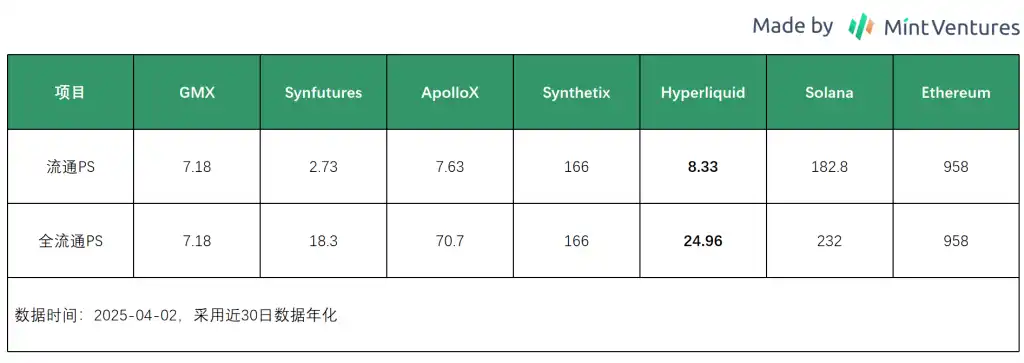
Disclaimer: The content of this article solely reflects the author's opinion and does not represent the platform in any capacity. This article is not intended to serve as a reference for making investment decisions.
You may also like
The tariff shock wave hits the pain point of the US government leadership
Argentina's lifting of currency controls triggers a surge in local stablecoin trading
BTC Breakout Alert: Wedge Crushed, $96K–$102K on the Horizon?
